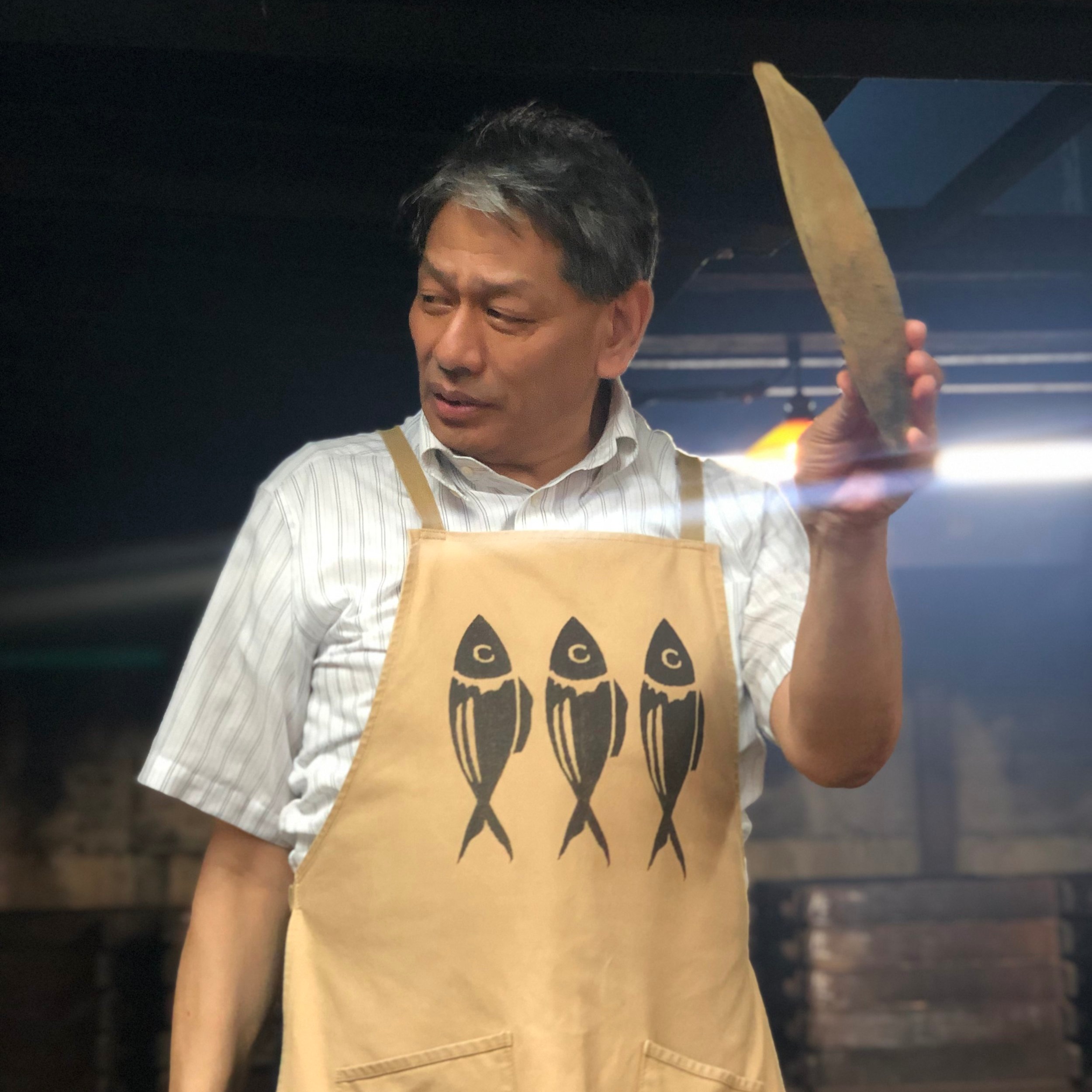Katsuobushi: the essence of japanese culture
We arrived in the run-down coastal town of Shima during the tail end of a typhoon. The harbour town, once a major tourist centre and home to glamorous nightclubs, has been reduced to a single street selling cheap pearl jewellery and seaweed to the occasional visitor. It’s few elderly inhabitants, who lived through its party heyday, look out suspiciously as a coach load of Westerners roam the streets.
Yukaiki Tenpaku’s family have been making traditional katsuobushi in the same tiny smokehouse, perched on top of the cliffs of Shima for over 100 years. We received a warm welcome from him, having already met at the Mie Prefecture municipal government headquarters two days before. The local government, who were in the midst of a campaign to promote gastronomic tourism in Mie, had been instrumental in planning our visit to Japan. They were also responsible for the local press and news cameras that had been following us around the region and were waiting for us outside Mr Tenpaku’s hut.
The building was dark and, unsurprisingly, filled with thick smoke, but warm from the fires. Sitting inside we could hear the wind howling outside.
Bonito fish are smoked and dried on racks
I have cooked with katsuobushi, the dried and fermented bonito fish flakes, but never fully understood its significance in Japanese cuisine, other than a as the key element for dashi, a king of Japanese stock. Mr Tenpaku explained that the fish are prepared this way because of their seasonal abundance. In the spring time, the bonito fish swim south to north up the Pacific coast of Japan, then in the autumn they swim back down. The oversupply at these two times meant that the catch had to be preserved so that it could be eaten when the fish were not following their migratory path.
Mr Tenpaku honours the slow, traditional method of producing katsuobushi. His fish are filleted then smoked over oak fires for a month. Explaining this process, Mr Tenpaku removed one of his smoked fish from the rack and broke it in half for us to try. Its flesh was still pink beneath the blackened exterior. A this point, the fish can be shaved and served on top of rice with pickles and fermented cherries.
The fermentation process, that removes any residual moisture left after the long smoking, takes a further three months, Mr Tenpaku explained. At this stage, the fillets have developed a white mould and are so hard that they can only be shaved into exceptionally thin flakes using a sharp blade. It is these flakes that when dissolved in water create the unique flavour of dashi.
Mr Tenpaku prepares smoked bonito fish with rice
In the smokehouse, Mr Tenpaku prepared his dashi using his katsuobushi and kombu, or dried kelp. The katsuobushi, he explained, has a high level of inosinic acid (ribonucleotide IMP) which gives it the savoury umami taste, whilst the kombu provides glutamic acid, the same umami flavour found in high qualities in tomatoes. After the famous discovery of the umami flavour in kombu by Kikunae Ikeda, it was Akira Kuninaka who discovered that the combination of these two different forms of umami resulted in a flavour more intense that if you simply added the two intensities together. It is the flavour of this stock that unites all the elements of Japanese cuisine – the rich fat of wagu beef, deep bone broths and sashimi dipped in soy sauce.
Later that evening, back at our hotel, a grand banquet was thrown in our honour and attended by many of the local producers and government delegates that we had met over the past few days. Each of the producers gave a short, stiff presentation at the start of the meal before the toasts and revelry started. It was a perfect demonstration of the culture that I was coming to understand: formal and deeply respectful, but also incredibly generous, warm and welcoming.
Opening course of a Japanese banquet
We ate sashimi and oysters, beautifully presented with various soups and seaweed and whole abalone, steamed in front of us at the table, alongside pork dumplings, and marinated tuna. All of this was washed down with a plentiful supply of dry Japanese beer and more shots of sake – with toasts of “kampai!” - that I care to remember. The savoury part of this epic meal finished in customary fashion, with a bow of steamed rice, pickles and a miso soup. The taste of the miso took me straight back to Mr Tenpaku’s smokehouse in Shima - that deep umami flavour that fills your whole mouth with contentment but leaves you wanting more. It will forever remind me of Mie, the spiritual home of Shintoism, where refinement and a calm respect for people and the planet are so deeply ingrained in the local culture.




